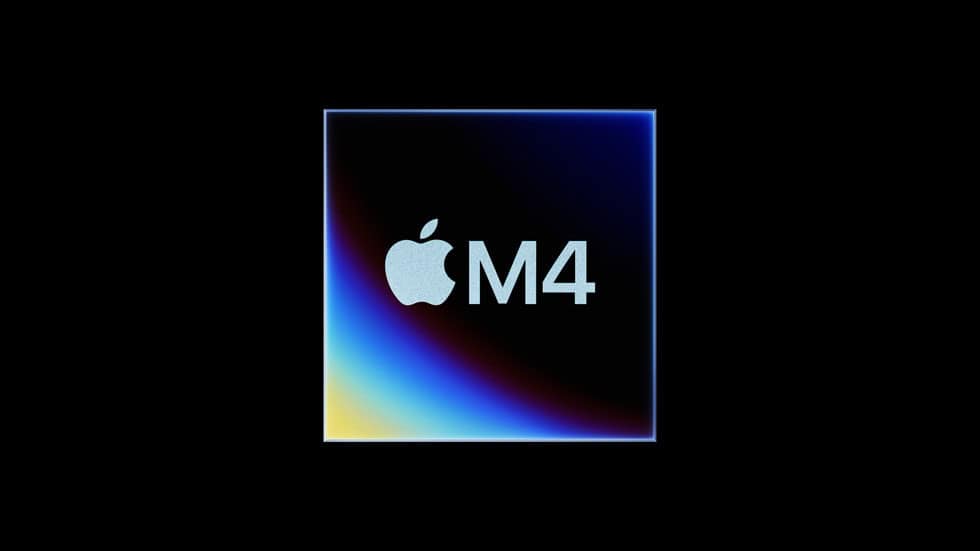Apple is gearing up to deliver a game-changing update to its iPad Air lineup in early 2025, with reports indicating a substantial performance overhaul powered by the advanced M4 chip. If true, this move would represent a bold step forward jumping from the M2 series, bypassing the M3 chip, and going straight to the market-leading M4 line. This move not only brings more power to iPad Air users but also opens up the world of Apple Intelligence to them as well.
However, the M4 chip is only part of the story. Apple is also reportedly redesigning the Magic Keyboard accessory and expanding display options to meet the evolving needs of productivity-focused users. Here’s a closer look at what we can expect from the next-generation iPad Air.
A Leap to the M4 Chip: Why It Matters
The decision to equip the 2025 iPad Air with the M4 chip instead of the M3 is more significant than it seems. Apple’s M4 processor is expected to leverage advanced 3-nanometer architecture, improving performance while reducing power consumption. This shift could bring faster app launches, better multitasking capabilities, and improved battery efficiency—critical features for students, professionals, and creatives alike.
The M4 chip is rumored to feature enhanced neural engine capabilities, which could unlock more potential for AI-driven apps. With iPadOS continually integrating more machine learning features—like on-device Siri improvements, live text recognition, and augmented reality applications—the M4 chip will ensure the iPad Air stays competitive for years to come.

Magic Keyboard: A New Era of Productivity
Alongside the performance boost, the iPad Air’s productivity credentials are getting a boost with a redesigned Magic Keyboard. Apple is reportedly aiming to make this accessory more accessible while retaining its premium functionality. The new model might feature a function key row for quicker access to system controls, aligning it more closely with MacBook keyboards.
Cost, however, remains a potential sticking point. The current Magic Keyboard retails for $299, making it nearly as expensive as Apple’s entry-level iPad. If the new version maintains this pricing, potential buyers may weigh the value of the accessory against the tablet’s capabilities. To make the device more compelling, Apple might introduce materials like silicone instead of aluminum, reducing costs without sacrificing durability.
Display Options: 11-Inch and 13-Inch Models
For the first time, the iPad Air will reportedly be available in two sizes: 11-inch and 13-inch. This diversification caters to users who need more screen real estate for tasks like photo editing, digital illustration, and document review. The larger display could also benefit professionals who want a more affordable alternative to the iPad Pro lineup.
While Apple is expected to stick with LCD panels instead of the iPad Pro’s advanced mini-LED or OLED displays, rumors suggest the iPad Air might get a bump to a 90Hz refresh rate. This upgrade would make scrolling and animations smoother, bridging the gap between the standard iPad’s 60Hz panel and the Pro’s 120Hz ProMotion technology.
Connectivity and Software: Built for the Future
The 2025 iPad Air is set to support Wi-Fi 6E and 5G, ensuring faster, more stable internet connections. This connectivity will be crucial as iPadOS continues to evolve with features like Stage Manager for improved multitasking, Freeform for collaborative brainstorming, and enhanced external display support.
Speaking of software, iPadOS 18 is expected to arrive alongside the new hardware, bringing new AI-powered tools and more seamless integration with Apple’s expanding ecosystem. From Universal Control with macOS devices to improved file management and cross-platform capabilities, the iPad Air is positioning itself as a versatile workhorse.
The iPad Air’s Place in Apple’s Strategy
Apple’s decision to equip the iPad Air with an M4 chip could reflect a broader strategy to streamline its product lineup. With the iPad Pro likely transitioning to OLED displays and pushing the performance envelope even further, the iPad Air becomes the go-to choice for users who want powerful performance without the Pro’s premium price tag.
Additionally, this refresh might help Apple revitalize its tablet sales, which have seen a decline in recent quarters. By delivering high-end performance at a mid-range price, the iPad Air could appeal to both professionals and casual users looking for a capable, future-proof device.
Key Takeaways
- Apple plans to equip the 2025 iPad Air with the M4 chip, bypassing the M3 generation
- The new iPad Air will retain its current design while adding Wi-Fi 6E and 5G connectivity
- Two size options will be available: 11-inch and 13-inch models with enhanced multitasking features
Upcoming iPad Air – Anticipated Features and Enhancements
The 2025 iPad Air is not just getting a simple update. It is expected to have the new M4 chip, a redesigned Magic Keyboard, and new display options. Apple aims to make this device a useful tool for work and creativity.
As we get closer to the official launch, people are curious to see how these features will perform in real life. They also want to know if the iPad Air can still be a good choice compared to budget tablets and high-end laptops.
Apple’s next iPad Air promises significant upgrades in processing power, display technology, and accessory compatibility. The refresh targets professional users with enhanced performance capabilities and productivity features.
M4 Chip Integration
The iPad Air refresh will feature Apple’s latest M4 chip, marking a substantial performance upgrade. This chip enables faster processing speeds and improved graphics capabilities compared to previous generations.
The M4 architecture supports advanced machine learning tasks and enhanced computational photography features. Users can expect smoother multitasking and more responsive app performance.
Battery efficiency remains a priority, with the M4 chip optimizing power consumption during intensive tasks. Early benchmarks suggest up to 20% faster processing speeds than the previous model.
Revamped Design and Display
The iPad Air maintains its slim profile while introducing new display technologies. The screen offers improved brightness levels and color accuracy.
The 90Hz refresh rate delivers smoother scrolling and more responsive touch input. Display sizes include both 11-inch and 13-inch options, catering to different user preferences.
Key display specifications:
- Resolution: 2360 x 1640 (11-inch model)
- Peak brightness: 600 nits
- P3 wide color support
- True Tone technology
Magic Keyboard Compatibility
The updated Magic Keyboard features an aluminum palm rest for improved durability. A larger glass trackpad enhances navigation precision and gesture control.
New function keys provide quick access to common tasks:
- Screen brightness controls
- Media playback buttons
- Volume adjustment
- Quick access to Spotlight search
The keyboard connects via Smart Connector and includes backlit keys for low-light use.
Connectivity and Power
The iPad Air includes Wi-Fi 7 support for faster wireless connections. The 5G-enabled models offer enhanced mobile connectivity with improved bandwidth.
USB-C port capabilities:
- Thunderbolt data transfer speeds
- External display support
- Fast charging support
- Peripheral device connectivity
Battery life extends to 10 hours of typical use, with fast charging reaching 50% in 30 minutes.
Software and Ecosystem
iPadOS 18 brings new multitasking features and improved window management. The system supports enhanced augmented reality applications through the M4 chip’s neural engine.
Professional apps benefit from the increased processing power:
- Video editing software
- 3D modeling applications
- Photo editing tools
- Digital art creation
Integration with other Apple devices enables seamless file sharing and workflow continuity.
Frequently Asked Questions
The upcoming iPad Air aims to bring performance upgrades with the M4 chip, a new Magic Keyboard accessory, and advanced connectivity options while maintaining its established design.
What enhancements are expected in the M4 chip for the upcoming iPad Air?
The M4 chip represents Apple’s next-generation processor technology, skipping the M3 generation entirely for the iPad Air lineup.
The new chip will enable enhanced performance for demanding applications and improved power efficiency.
Advanced machine learning capabilities and graphics processing will support the latest iPadOS features and multitasking functions.
When is the release date anticipated for the new iPad Air model?
Apple plans to launch the new iPad Air in early 2025, approximately one year after the previous refresh.
The spring release window aligns with Apple’s traditional iPad update cycle.
Will the upcoming iPad Air support the Apple Pencil and other accessories?
The new iPad Air will maintain compatibility with existing Apple Pencil models.
A new Magic Keyboard accessory will feature a function row of keys, distinguishing it from the iPad Pro version with its aluminum top case.
The device will support Wi-Fi 6E and 5G connectivity for faster wireless connections.
Are there any notable design changes in the new iPad Air compared to previous models?
The 2025 iPad Air will retain its current design language with no significant external changes.
Apple will continue offering the iPad Air in both 11-inch and 13-inch display sizes.
What will be the starting price for the latest version of the iPad Air?
Pricing details remain unconfirmed for the 2025 iPad Air model.
The current accessory pricing structure places the Magic Keyboard at $299, while the base model iPad starts at $349.
How will the new Magic Keyboard be different from the previous version?
The updated Magic Keyboard for iPad Air will introduce a dedicated function row of keys.
Unlike the iPad Pro’s Magic Keyboard with its aluminum construction, the iPad Air version will use different materials.
The new keyboard design aims to enhance productivity while maintaining portability.







